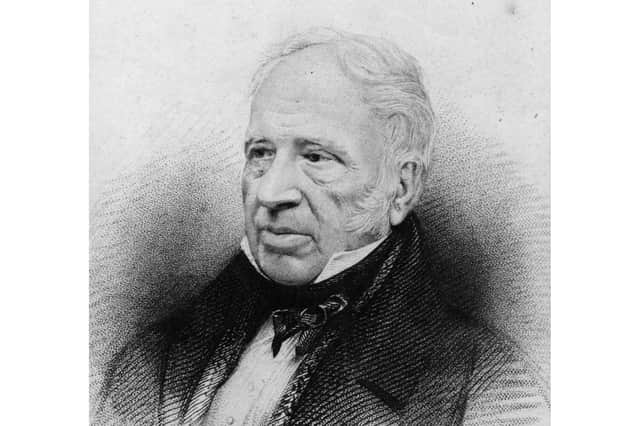Scarborough-born 'Father of Aeronautics' Sir George Cayley set to be honoured


Recognised as the Father of Aeronautics, he was the sixth Baronet to hold the family title and lived at Brompton Hall, part of the family estate in the village.
Sir George who died in 1857 at the age of 83, was the English pioneer of aerial navigation and aeronautical engineering.
Advertisement
Hide AdAdvertisement
Hide AdHis achievements also included designing a variety of aircraft including helicopters, airships and fixed wing machines and even the caterpillar tractor.
He also invented the light tension wheel – forerunner of the bicycle wheel – and pursued research in science education, land reclamation, lifeboats and electricity.
One of his biggest achievements was the invention of the self-righting lifeboat and he gave one to Scarborough.
Sir George also invented systems of drainage ditches and set up the Muston and Yedingham Drainage Board in the Scarborough and Ryedale area, and pioneered the building of the Scalby Sea Cut, a major project to protect flooding in the Hackness and East and West Ayton areas.
Advertisement
Hide AdAdvertisement
Hide AdIn another aspect of his distinguished career, Sir George was a Whig MP for Scarborough.
The Yorkshire Philosophical Society of which he was a vice president, recently honoured his 250th anniversary with lectures at the Yorkshire Museum in York where Dr Mary Jones, a leading authority, described him as one of the most important people in the history of aeronautics. She said: “He spent his time trying to find ways of making the world around him better.”
Legend has it that Sir George’s coachman reluctantly manned the first glider flight on record in Brompton Dale, a landmark event re-enacted by Sir Richard Branson of Virgin airline fame a few years ago.
A replica of his glider is now in the Yorkshire Aviation Museum at Elvington, York.
Advertisement
Hide AdAdvertisement
Hide AdNow the National Transport Trust is investigating the possibility of placing one of its Red Wheel Plaques on Cayley’s workshop at Brompton Hall.
Deputy Chairman, Jerry Swift, said: “He is such an important figure in aviation history and we feel the location is worthy of such a plaque to celebrate his achievements.”